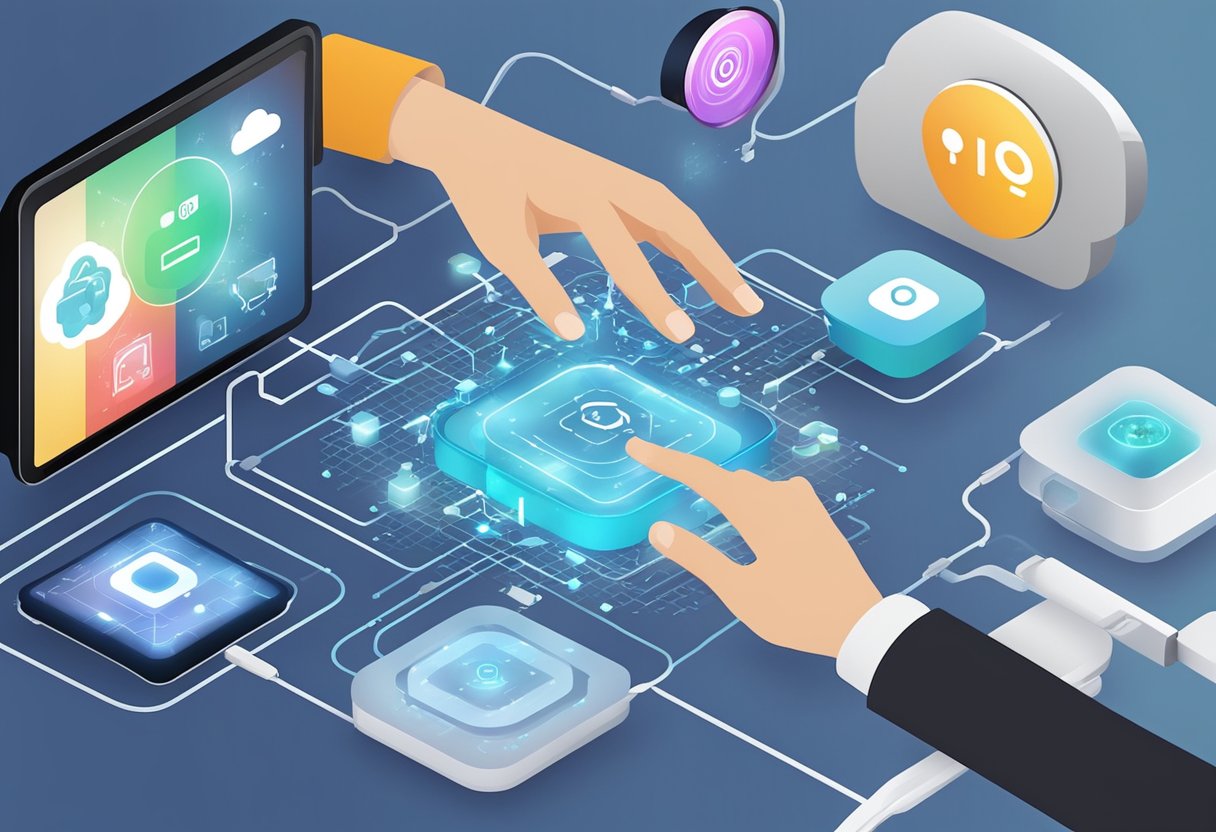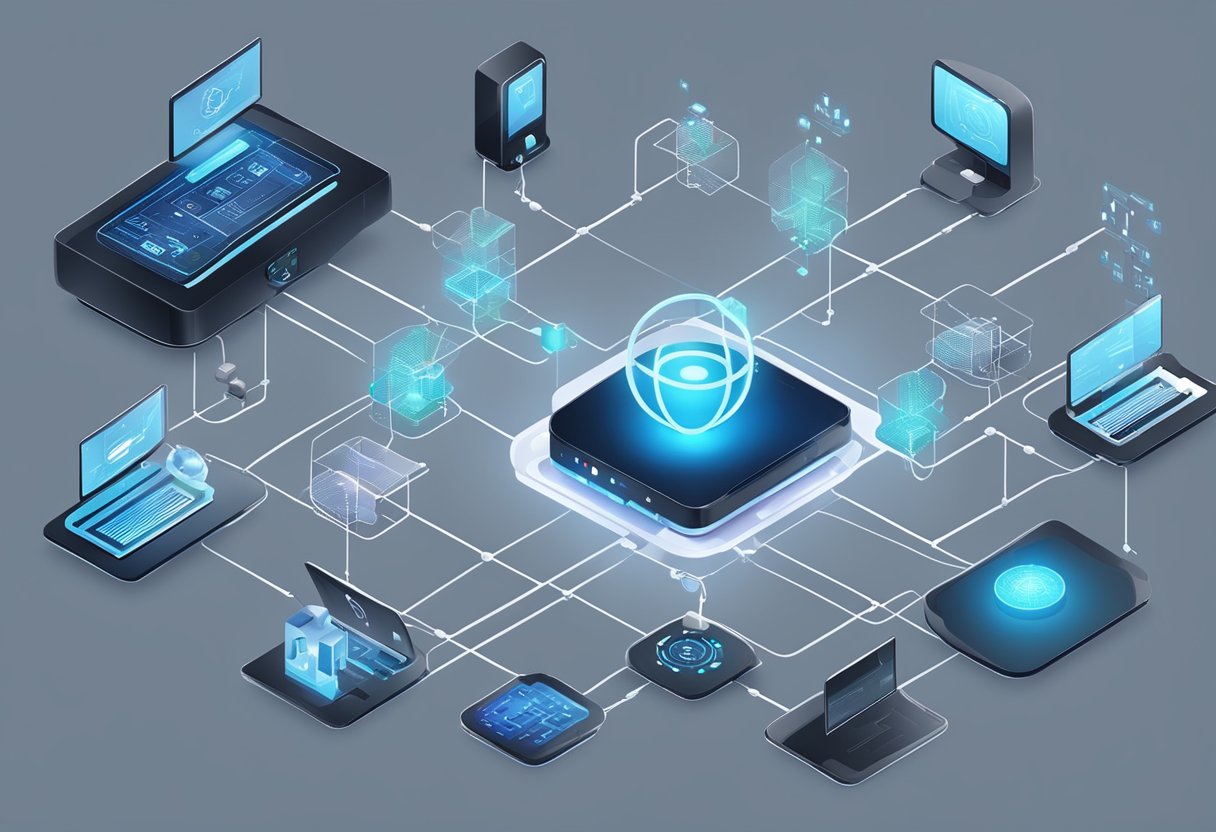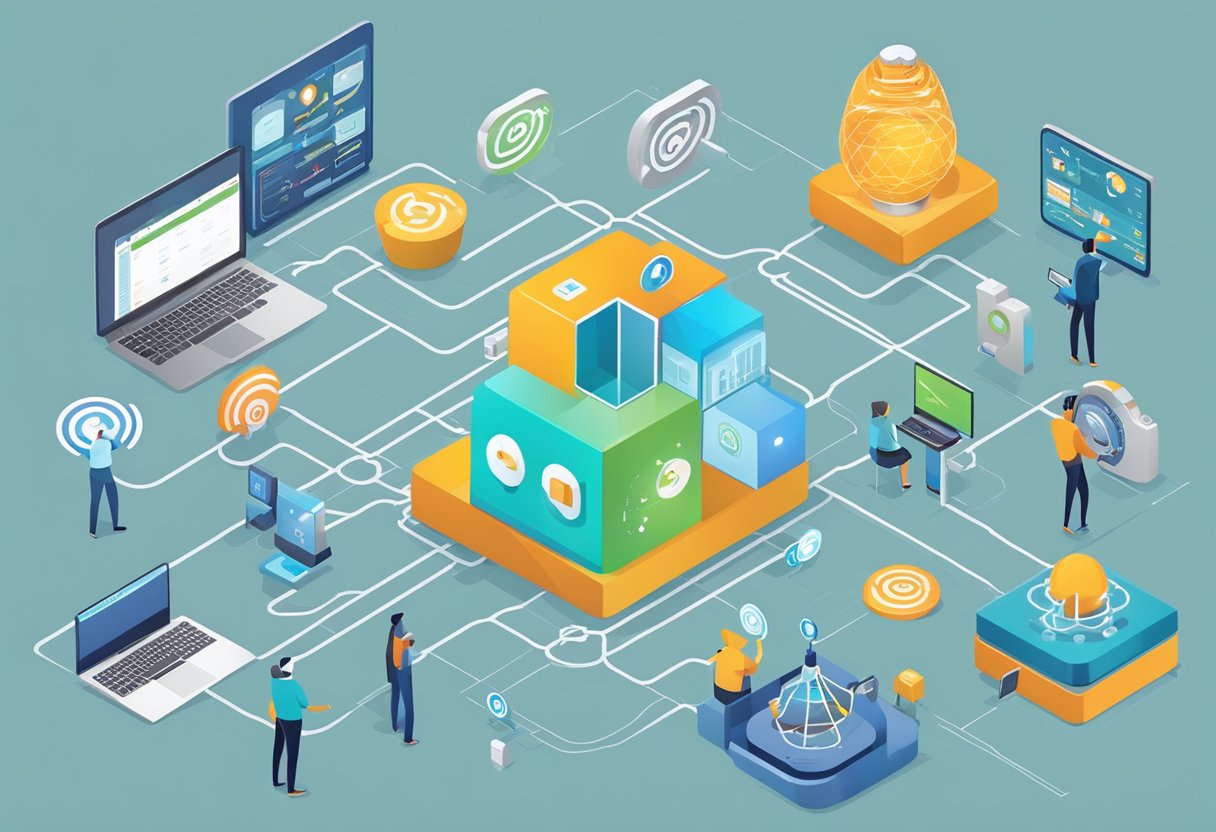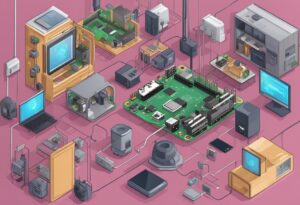IoT devices have become increasingly popular in recent years, offering a convenient and interconnected way to automate and control various aspects of daily life.
From smart thermostats to security cameras, these devices can be controlled remotely through a smartphone or computer.
However, with the growing number of IoT devices available, it can be challenging to manage and control them effectively.
Understanding how to control IoT devices is essential for anyone looking to integrate them into their daily routine.
This involves learning about the different types of devices available and how they can be controlled, as well as the security and privacy concerns associated with IoT.
Additionally, integrating IoT with cloud platforms can offer additional benefits, such as increased scalability and flexibility.
Key Takeaways
- Understanding the different types of IoT devices and how they can be controlled is crucial for effective management.
- Security and privacy concerns must be addressed when controlling IoT devices.
- Integrating IoT with cloud platforms can provide additional benefits such as scalability and flexibility.
Understanding IoT Device Control
IoT (Internet of Things) devices are becoming increasingly popular in homes and businesses around the world.
These devices can be anything from smart thermostats, security cameras, or even refrigerators that can be controlled remotely.
To effectively control these devices, you need to understand the basics of IoT, communication protocols, connectivity, device management, and configuration.
The Basics of IoT
IoT refers to the connection of physical devices to the internet, allowing them to communicate with each other and with other systems.
These devices can be anything from sensors, actuators, and smart devices that collect data and perform actions based on that data.
IoT devices can be controlled remotely using a variety of methods, including mobile apps, web interfaces, and voice assistants.
Communication Protocols and Connectivity
IoT devices use a variety of communication protocols to connect to the internet and communicate with other devices.
Some of the most common communication protocols include Wi-Fi, Bluetooth, Zigbee, and Z-Wave.
Each protocol has its own strengths and weaknesses, and the choice of protocol will depend on the specific use case and requirements of the device.
Connectivity is also an important consideration when it comes to IoT devices.
Devices can be connected to the internet using wired or wireless connections, and the choice of connectivity will depend on the specific requirements of the device.
For example, a smart thermostat may be connected to the internet using Wi-Fi, while a sensor in a remote location may use a cellular connection.
Device Management and Configuration
Device management and configuration are important considerations when it comes to IoT devices.
This includes tasks such as firmware updates, security patches, and device configuration.
Device management platforms can be used to simplify these tasks, allowing devices to be managed and configured remotely.
Configuration of IoT devices is also important, as it can affect the security and performance of the device.
This includes tasks such as setting up passwords, configuring network settings, and setting up security protocols.
Security and Privacy in IoT
IoT devices have revolutionized the way people interact with technology, but they also pose significant security and privacy risks.
In this section, we will discuss some of the most pressing issues related to security and privacy in IoT and provide some best practices for managing these risks.
Authentication and Encryption
One of the most important ways to secure IoT devices is to ensure that they are properly authenticated and encrypted.
Authentication ensures that only authorized users can access the device, while encryption protects the data transmitted between devices from being intercepted by unauthorized parties.
To ensure proper authentication, users should always change the default login credentials on their IoT devices. They should also use strong, unique passwords and enable two-factor authentication whenever possible.
Encryption can be achieved through the use of secure protocols such as HTTPS, TLS, and SSL.
Security Best Practices
To further enhance the security of IoT devices, users should follow some best practices. These include:
- Keeping devices up to date with the latest software and firmware updates to ensure that any known security vulnerabilities are patched.
- Disabling unnecessary features and services to reduce the attack surface of the device.
- Using firewalls and other security software to protect against malware and other cyber threats.
- Regularly monitoring device logs and network traffic to detect any suspicious activity.
Managing Privacy Concerns
Privacy is another major concern when it comes to IoT devices.
These devices often collect vast amounts of data about their users, which can be used for targeted advertising or other purposes.
To manage privacy concerns, users should:
- Read the privacy policies of any IoT devices they use to understand what data is being collected and how it is being used.
- Only provide necessary information to IoT devices and avoid giving away sensitive data such as passwords or financial information.
- Use privacy-focused tools such as VPNs to encrypt their internet traffic and protect their online privacy.
Integrating IoT with Cloud Platforms

One of the most significant advantages of IoT is the ability to collect and analyze data from various devices. However, this data is of little use if it cannot be stored, processed, and analyzed effectively.
That’s where cloud platforms come in. By integrating IoT with cloud platforms, businesses can leverage the power of the cloud to store and analyze data from IoT devices.
Benefits of Cloud Integration
Integrating IoT with cloud platforms has several benefits.
Firstly, cloud platforms provide a scalable and cost-effective way to store and process large amounts of data.
Secondly, cloud platforms offer a range of tools and services for analyzing data, such as machine learning and data visualization.
Thirdly, cloud platforms provide a secure and reliable way to store and transmit data, which is critical for IoT applications.
Popular IoT Cloud Services
There are several popular cloud services that businesses can use to integrate IoT devices.
One such service is Microsoft Azure IoT, which provides a range of tools and services for managing IoT devices.
Another popular service is Google Cloud IoT, which offers a range of tools for ingesting, processing, and analyzing IoT data.
Amazon Web Services (AWS) IoT is another popular service that provides a range of tools for managing and analyzing IoT data.
Setting Up Cloud-Based IoT Hub
Setting up a cloud-based IoT hub involves several steps.
Firstly, businesses need to choose a cloud platform that meets their requirements.
Secondly, they need to create an IoT hub on the platform and register their devices with the hub.
Thirdly, they need to configure the devices to send data to the hub using protocols such as MQTT.
Finally, they can use the tools and services provided by the cloud platform to store, process, and analyze the data from the IoT devices.
Advanced IoT Device Control Techniques

Controlling IoT devices is becoming increasingly important as the number of connected devices continues to grow.
Advanced techniques such as AI and machine learning, automation and remote management, and firmware and software updates can help users control their IoT devices more effectively.
Leveraging AI and Machine Learning
AI and machine learning can be used to analyze data from IoT devices and make predictions about future behavior.
This can help users identify potential problems before they occur and take action to prevent them.
For example, machine learning algorithms can be used to detect patterns in sensor data that indicate a device is about to fail. Users can then take action to replace the device before it fails, avoiding downtime and reducing maintenance costs.
Automation and Remote Management
Automation and remote management can help users control their IoT devices more effectively.
For example, users can set up rules that automatically turn off lights or adjust the thermostat when they leave the house.
Remote management allows users to control their devices from anywhere, using a smartphone or other device.
This can be especially useful for users who are away from home and need to check on their devices or make changes.
Firmware and Software Updates
Firmware and software updates are essential for keeping IoT devices secure and up-to-date.
Users should regularly check for updates and install them as soon as they become available.
This can help prevent security vulnerabilities and ensure that devices are functioning properly.
Users should also be aware of any known issues with their devices and take action to address them, such as contacting the manufacturer for support.
Frequently Asked Questions

What are the common methods for managing IoT devices remotely?
IoT devices can be managed remotely using various methods such as mobile apps, web-based dashboards, and voice assistants.
Mobile apps provide a user-friendly interface for controlling devices from a smartphone or tablet.
Web-based dashboards allow users to access and manage their devices from any web-enabled device.
Voice assistants such as Amazon Alexa and Google Assistant enable hands-free control of IoT devices through voice commands.
What security measures are necessary for controlling IoT devices?
Security is a critical concern when it comes to controlling IoT devices.
Some essential security measures include using strong passwords, enabling two-factor authentication, keeping devices and software up-to-date with the latest security patches, and using encryption to protect data in transit.
It is also important to use a secure network and avoid using public Wi-Fi networks to control IoT devices.
How do IoT devices communicate with each other?
IoT devices communicate with each other using various protocols such as Wi-Fi, Bluetooth, Zigbee, and Z-Wave.
These protocols enable devices to exchange data and commands, allowing them to work together seamlessly.
In addition, IoT devices can communicate with cloud-based services, enabling remote management and monitoring.
What is the role of network management in IoT device control?
Network management plays a crucial role in IoT device control.
A well-designed network infrastructure can ensure reliable connectivity, reduce latency, and provide the necessary bandwidth for data transfer.
Network management also involves monitoring the network for potential security threats and taking appropriate measures to mitigate them.
How can you integrate IoT devices with existing smart home systems?
Integrating IoT devices with existing smart home systems requires compatibility between the devices and the system.
Many smart home systems use standard protocols such as Wi-Fi, Zigbee, and Z-Wave, making it easier to integrate compatible devices.
In addition, some devices may require a hub or bridge to connect to the smart home system.
What are the best practices for ensuring reliable IoT device connectivity?
To ensure reliable IoT device connectivity, use a strong and stable network. This includes using a reliable internet service provider.
Make sure to set up a secure Wi-Fi network and place devices in areas with strong signal strength. Also, keep devices and software up-to-date with the latest firmware and security patches.



